For a little over a year, between 2013 and the first quarter of 2014, Malaysia’s policy surrounding the South China Sea dispute hit a shroud of confusion. Taken aback by Chinese naval patrols around James Shoal (Beting Serupai in Malay), only 43 nautical miles off the coast of Sarawak State, the government responded with a baffling array of silence, denial, and nonchalance. Malaysian authorities had been caught off balance by China’s audacity, which they had not expected given Kuala Lumpur’s perceived special relationship with Beijing.
Now there is a growing sense of disquiet, if not wariness and exasperation, in Malaysia. There are more questions being asked about Chinese intentions and they are being asked more insistently. While elements of the special win-win relationship between Malaysia and China remain on the political and economic fronts, a very different reality exists in the South China Sea.
Until recently, a Chinese Coast Guard (CCG) vessel had been anchored near South Luconia Shoal (Beting Patinggi Ali), just 84 nautical miles off the coast of Sarawak, since September 4, 2013. Markers placed by the Malaysian government have mysteriously disappeared, replaced by those written in a “foreign language,” according to parliamentary proceedings. The CCG ship has also reportedly chased away Malaysian fishermen from the area and even threatened them, prompting complaints and a call to action by the Sarawak government and the fishermen’s association of Miri, the state’s second largest city.
 Given the domestic political significance of Malaysian Borneo—Sarawak and neighboring Sabah State—if this keeps up the federal government will be compelled to rethink its options to respond in these waters. Malaysian naval and maritime enforcement vessels have already stepped up the frequency of patrols in the area, to 345 days in 2015 (as of December 14) from 269 in 2014. The government is also looking to boost the Malaysian Maritime Enforcement Agency’s assets and capacity, including expanding its range of operations to 200 nautical miles from shore.
Given the domestic political significance of Malaysian Borneo—Sarawak and neighboring Sabah State—if this keeps up the federal government will be compelled to rethink its options to respond in these waters. Malaysian naval and maritime enforcement vessels have already stepped up the frequency of patrols in the area, to 345 days in 2015 (as of December 14) from 269 in 2014. The government is also looking to boost the Malaysian Maritime Enforcement Agency’s assets and capacity, including expanding its range of operations to 200 nautical miles from shore.
Minister in the Prime Minister’s Department Shahidan Kassim first raised the matter of the CCG ship’s presence at South Luconia Shoal in Parliament in March 2014. In June 2015, he broke with convention by taking to Facebook to highlight the “intrusion.” His post, complete with aerial photos, marked a departure from the Malaysian government’s usually muted approach to the South China Sea disputes. Shahidan’s actions may have been anomalous given the quiet diplomacy that still prevails among the political and military leadership, but they reflected many Malaysians’ growing frustration at Chinese brazenness.
The CCG vessel left the area around South Luconia Shoal during the ASEAN Summit and related meetings held in Kuala Lumpur in late November 2015, perhaps as a matter of face. The intractability of the South China Sea issue had been highlighted earlier that month when no joint statement was issued by the 18 members of the ASEAN Defense Ministers Meeting Plus due to bitter divisions over reference to the dispute. Nonetheless, Malaysia put to rest any concerns that it would be an obsequious chair vis-à-vis China.
The chairman’s statements of the ASEAN Summit and the East Asia Summit each contained five paragraphs dedicated to the South China Sea, expressing concern about the possibility of militarization of outposts and the erosion of trust and confidence. The chairman’s statements of the ASEAN-China Summit and the ASEAN-U.S. Summit each contained two paragraphs referencing the South China Sea, though the former omitted any mention of land reclamation or militarization. All the statements affirmed the importance of the 2002 Declaration on the Conduct of Parties in the South China Sea (DOC) and of concluding a binding Code of Conduct (COC), as well as the observance of international law. The East Asia Summit chairman’s statement even referenced the assurances given by President Xi Jinping during his earlier visit to the United States that China would not pursue militarization in the South China Sea.
 Malaysian armed forces chief Zulkifeli Mohd Zin observed during the October 2015 Xiangshan Forum in Beijing that time will judge China’s—and every party’s—sincerity in the South China Sea. Time, however, is not a luxury all claimant states have. There is already doubt that the CCG vessel’s departure from South Luconia Shoal was permanent. And the scale and intensity of environmental destruction caused by China’s land reclamation work in the Spratly Islands means that marine resources may be substantially depleted by the time there is any effective and meaningful implementation of the DOC or COC.
Malaysian armed forces chief Zulkifeli Mohd Zin observed during the October 2015 Xiangshan Forum in Beijing that time will judge China’s—and every party’s—sincerity in the South China Sea. Time, however, is not a luxury all claimant states have. There is already doubt that the CCG vessel’s departure from South Luconia Shoal was permanent. And the scale and intensity of environmental destruction caused by China’s land reclamation work in the Spratly Islands means that marine resources may be substantially depleted by the time there is any effective and meaningful implementation of the DOC or COC.
Despite growing apprehension both internally and externally, the Malaysian government will continue to rely on diplomacy and restraint for its policy in the South China Sea. Instruments such as the DOC and COC, and proposals for an expanded Code for Unplanned Encounters at Sea and an analogue for overflights, will remain highly valued by Malaysian officials. So too will adherence to international law, including the United Nations Convention on the Law of the Sea.
Meanwhile the Malaysian government might be better off tempering its own expectations of a mutually recognized or reciprocal special relationship with China. If both sides were really placing stock in such a relationship, then it should be reflected across the board, including in the South China Sea. This does not mean that Malaysia should or will begin choosing sides between China and others in any conceivable future. But it means that in the face of rising Chinese assertiveness and a rapidly changing South China Sea landscape, Malaysia will no longer be as averse to recalibrating its policy as needed to protect, preserve, and advance its national interest.
Malaysia may, in fact, already be at that point.

Services
Stakeholder mapping, analysis, engagement and communication needs to be detailed to avoid business losses or even worse, a crisis. How can you do this effectively to prevent failure? ...
Data-driven business decisions have never been as crucial, especially in this era. MGBF leverages off, technology, experience and market presence to aid businesses in making accurate decisions. ...
MGBF provides comprehensive strategic advice and results-focused solutions to solve clients' problems in business-government relations so they can focus on their core business. ...
A critical business challenge is meeting the right decision-makers and potential buyers through the best channel and platform. How will you improve your business competency? ...
Upcoming Events
MGBF founding chairman Nordin Abdullah and UMW Toyota president Datuk Ravindran K. will delve into the convergence of automotive innovation and environmental sustainability in Penang, Sarawak, Johor and Pahang.
Hosted by menumiz™ – an end-to-end restaurant management system – this roundtable will feature a case study presentation and a panel session to discuss the latest digital trends, challenges, and opportunities within the food and beverage sector.
In this episode of 'A Working Lunch with Nordin', MGBF's founding chairman, Nordin Abdullah, will host this discussion focusing on the biggest threats and opportunities for businesses as we look to manage change in the South China Sea.
This MGBF Roundtable will focus on regional food security issues and trends in the regional supply chain, and trade regulations and policies, including a new geopolitical tool i.e., weaponisation of supply chains.
MGBF In The News
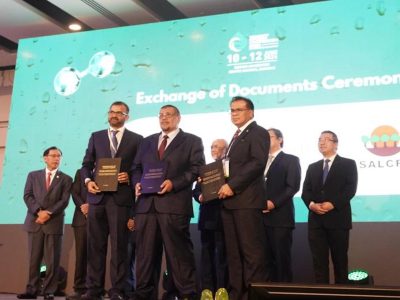
Planet QEOS, KIS BlOCNG San Bhd, and the Sarawak Land Consolidation and Rehabilitation Authority (SALCRA) have officially signed a tripartite memorandum of understanding (MoU) to establish a collaborative framework aimed at producing bio-hydrogen via the Steam Biomethane Reforming (SBMR) Process. The MoU was signed by Planet QEOS executive chairman Dino […]
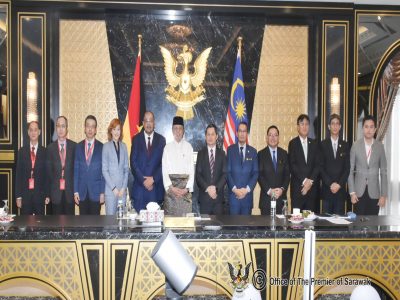
Planet QEOS and China Machinery Engineering Corporation (CMEC) are interested in investing RM10 billion to co-develop advanced Megawatt peak (MWp) agrovoltaic in Baram, to further boost Sarawak’s green energy initiative and food security. Sarawak Premier Datuk Patinggi Tan Sri Abang Johari Tun Openg was briefed on Friday by both the […]
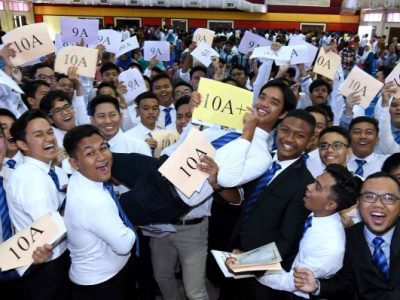
Last week SPM results came out, 373,974 aspirants who have been waiting patiently over the last few months would now know their fate. Some 10,109 have received all A’s, the golden standard of academic success and the ticket to those looking to study the “more advanced” subjects in university. Proudly, […]

The classic knee-jerk reaction is to say, fire the coach, change the leadership of associations, and reduce the funding till they start performing better. This kind of negative reinforcement may work for kindergarten children, but we are dealing with high-performance adults – individuals much further along in their psychological and […]
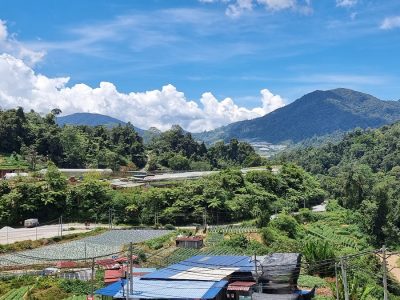
Since its earliest tea plantations in 1929, Cameron Highlands has grown to become a key player in the agricultural landscape of Malaysia, producing 40 per cent of all vegetables grown. Despite Malaysia shifting its economic focus away from agriculture, the industry remains imperative for food security and the livelihoods of […]

Although at first glance the travel industry and the agricultural sector appear to have nothing in common, they actually share more than meets the eye. The economic benefits of tourism to the agricultural sector can be multiplied several times over. “Tourism brings the end consumers closer to the source, which […]

The Malaysia Global Business Forum (MGBF) recently held a high-level roundtable themed ‘Designing the Future of the Digital Economy’, attended by industry leaders and business associations. The guest of honour was Yang Berhormat Syerleena Abdul Rashid, the Member of Parliament (MP) for Bukit Bendera in Penang. The MP’s Special Session […]

The Malaysia Global Business Forum (MGBF) will be hosting a roundtable on ‘Designing the Future of the Digital Economy’ on 23 February 2023. It is the culmination of the first three MGBF Exclusive Roundtable Series titled ‘The Evolving Threat Matrix in the Digital Economy’ held throughout 2022. According to the […]

The Founding Chairman of the Malaysia Global Business Forum (MGBF), Nordin Abdullah, today spoke on Bernama TV’s leading English talk show, The Brief, hosted by Jessy Chahal, on the topic of a stable political reality and what that means for the Malaysian economy. Nordin said, “The first thing that it […]

More than 1,100 years ago, Muhammad ibn Musa al-Khwarizmi was developing the mathematical formulas that we know today as algorithms which now have become so intertwined with the business fortunes of global media giants and the very fabric of geopolitics. A series of recent high level international reports have revealed […]

KSK Land has been recognised by the Malaysia Global Business Forum (MGBF) for its role in attracting high net-worth individuals to Malaysia post-pandemic. The first challenge in investor attraction is “selling” the country. In the context of Asia, Malaysia is competing with some very established investment destinations. The second […]

Malaysia, in particular Kuala Lumpur, continues to position itself as a regional centre to do business, educate a family and enjoy a global lifestyle. One company, KSK Land, has taken the lead in positioning itself and the city of Kuala Lumpur as a property investment destination for the global citizen […]

The upcoming budget represents an opportunity to build resilience in the critical sectors that will form the backbone of the country’s future-facing economic ambitions. This however needs to be achieved in the context of managing the community sectors most impacted by COVID-19 over the past two years. The Keluarga Malaysia (Malaysian Family) […]

Malaysia Global Business Forum (MGBF) has moved to support the creative economy as the overall economy moves into a recovery phase following the COVID19 pandemic. As a step in the direction of normalcy, the MGBF has agreed to host the art exhibition “I Know You’re Somewhere So Far” by one […]
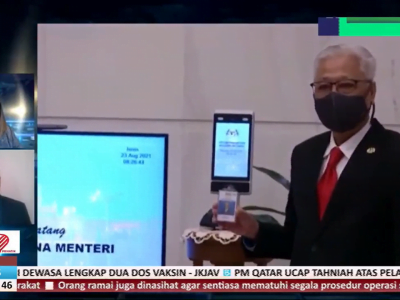
Congratulations to Datuk Seri Ismail Sabri Yaakob for taking up the mantle of the ninth prime minister of Malaysia. There is nothing normal about the situation; it could not have been scripted but it has kept the spectrum of media, mainstream and social, gripped. The first order of business for […]

In a stirring speech to the nation, President Joseph R. Biden, Jr. stamped his brand of leadership on the presidency, in his first act as the 46th president of the United State of America, it signaled several shifts. Perhaps the weather was foreboding with snow falling before the ceremony that […]

KUALA LUMPUR, 6 July 2022 – As the global economy continues to deal with unprecedented levels of disruption caused by the pandemic and the conflict between Russia and Ukraine, the convergence of energy security and food security issues has become a front-of-mind issue faced by policy makers and consumers alike. […]

KUALA LUMPUR, 23 June 2022 — Malaysia Global Business Forum (MGBF) ties up with scoutAsia to ensure that businesses are equipped with deeper regional insights. The past two years has seen a massive shift in the way businesses are conducted with digitisation, digitalisation and automation continuously being adopted to improve […]
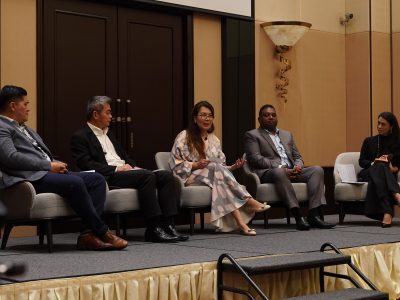
KUALA LUMPUR, 25 May 2022 – The Malaysia Global Business Forum (MGBF)’s exclusive roundtable on ‘Security Concerns in Critical Value Chains’ was held in a hybrid setting yesterday at the Eastin Hotel Kuala Lumpur. The guest of honour was Yang Berbahagia Tan Sri Dato’ Seri Rafidah Aziz, former minister of […]
 Given the domestic political significance of Malaysian Borneo—Sarawak and neighboring Sabah State—if this keeps up the federal government will be compelled to rethink its options to respond in these waters. Malaysian naval and maritime enforcement vessels have already stepped up the frequency of patrols in the area, to 345 days in 2015 (as of December 14) from 269 in 2014. The government is also looking to boost the Malaysian Maritime Enforcement Agency’s assets and capacity, including expanding its range of operations to 200 nautical miles from shore.
Given the domestic political significance of Malaysian Borneo—Sarawak and neighboring Sabah State—if this keeps up the federal government will be compelled to rethink its options to respond in these waters. Malaysian naval and maritime enforcement vessels have already stepped up the frequency of patrols in the area, to 345 days in 2015 (as of December 14) from 269 in 2014. The government is also looking to boost the Malaysian Maritime Enforcement Agency’s assets and capacity, including expanding its range of operations to 200 nautical miles from shore. Malaysian armed forces chief Zulkifeli Mohd Zin observed during the October 2015 Xiangshan Forum in Beijing that time will judge China’s—and every party’s—sincerity in the South China Sea. Time, however, is not a luxury all claimant states have. There is already doubt that the CCG vessel’s departure from South Luconia Shoal was permanent. And the scale and intensity of environmental destruction caused by China’s land reclamation work in the Spratly Islands means that marine resources may be substantially depleted by the time there is any effective and meaningful implementation of the DOC or COC.
Malaysian armed forces chief Zulkifeli Mohd Zin observed during the October 2015 Xiangshan Forum in Beijing that time will judge China’s—and every party’s—sincerity in the South China Sea. Time, however, is not a luxury all claimant states have. There is already doubt that the CCG vessel’s departure from South Luconia Shoal was permanent. And the scale and intensity of environmental destruction caused by China’s land reclamation work in the Spratly Islands means that marine resources may be substantially depleted by the time there is any effective and meaningful implementation of the DOC or COC.


































